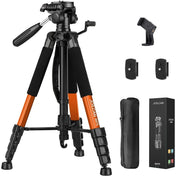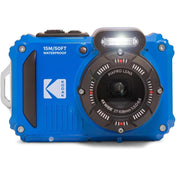Landscape photography is an art form that allows photographers to convey the beauty and majesty of nature while expressing their unique perspective. Whether you are a beginner or an experienced photographer, capturing breathtaking landscapes can be a rewarding experience. In this article, we will explore essential tips for landscape photography that will help you take remarkable photos and inspire you to get out there with your camera and your favorite 14-42mm lens.
Understanding the Basics of Landscape Photography
Before delving into specific techniques, it’s crucial to understand the fundamentals of landscape photography. This genre requires more than just the technical know-how; it demands a trained eye that can identify stunning scenes that tell a story. Here are some foundation principles to consider:
The Importance of Light
Lighting is one of the most critical components of landscape photography. The golden hours—just after sunrise and just before sunset—offer the soft light that enhances colors and creates depth. Shooting during these times can turn an ordinary scene into something extraordinary.
Composition Matters
Good composition can elevate your landscape photos significantly. Utilize the rule of thirds by positioning the horizon line either in the bottom or top third of your frame. Experiment with leading lines, foreground interest, and framing to draw viewers’ eyes into your image.
Choosing Your Gear Wisely
Your choice of gear can significantly impact the quality of your landscape photography. A 14-42mm lens is a versatile option that gives you the flexibility to capture wide vistas as well as more intimate details of the landscape.
Why the 14-42mm Lens is Ideal
This lens provides the perfect range for landscape photography. With its wide-angle capabilities, you can capture sweeping vistas and large scenes, while its zoom option allows you to create stunning compositions with distant objects. This makes it an excellent choice for both beginners and experienced photographers alike.
Planning Your Shoot
Effective landscape photography requires careful planning. Here are tips to prepare for your photographic adventure:
Scout Locations Ahead of Time
Visit potential locations prior to your shoot if possible. Spending time at different times of day can give you insights into the best lighting conditions and angles for your photographs. There are many apps and websites available that can help you find beautiful locations nearby.
Check the Weather
The weather can make or break your landscape shots. Overcast skies can create dramatic lighting, while sunny days may produce harsh shadows. Check weather forecasts to choose the optimal conditions for your shoot.
Mastering Camera Settings
Understanding and adjusting your camera settings can significantly improve your landscape photography. Here are essential settings to consider:
Use a Tripod
A tripod is essential for maintaining stability in your shots, especially when using slower shutter speeds. When using a 14-42mm lens, a tripod will help capture steady, sharp images, particularly in low light settings.
Focus on Depth of Field
For landscapes, achieving a deep depth of field is crucial. Set your aperture to a higher number (like f/8 or f/11) to ensure that both foreground and background elements are in focus. This will enhance the overall quality of your photographs.
Creative Techniques to Elevate Your Photography
Once you’ve mastered the basics, here are some creative techniques to take your landscape photography to the next level:
Incorporate Foreground Elements
Including foreground elements can add depth and interest to your landscape photos. Look for rocks, flowers, or other interesting subjects in the foreground to create layered compositions that lead the eye into the frame.
Experiment with Filters
Using filters can significantly enhance the colors and contrast in your landscape photos. Graduated ND filters can help balance the exposure between bright skies and darker land, while polarizing filters reduce reflections and increase color saturation.
Post-Processing Techniques
Even the best shots can benefit from post-processing. Here are some tips to elevate your landscape images in editing software:
Adjusting Exposure and Contrast
In post-processing, make adjustments to exposure and contrast to bring out the details in your images. Highlight recovery can salvage details in the sky, while shadow adjustments can add depth to darker areas.
Enhance Colors
Boosting color vibrancy can breathe life into your landscapes. Use saturation and vibrance sliders carefully to enhance your images without making them look artificial. Aim for balanced color corrections for a natural feel.
Impact of the Right Timing and Seasons
Timing plays a significant role in landscape photography. Each season brings unique characteristics that can enhance your shots:
Spring Blossoms
Spring is perfect for capturing floral landscapes and lush greenery. Utilize your 14-42mm lens to get close-up details of blooming flowers against scenic backdrops.
Summer Vistas
Summer landscapes are often vibrant and colorful. Try taking advantage of clear skies and golden sunlight to capture sweeping views of mountains or lakes.
Autumn Colors
Fall is favored among photographers for its rich color palette. The changing leaves provide a stunning contrast against blue skies, offering endless composition possibilities.
Winter Wonderland
Winter landscapes bring a entirely different ambiance. Snow-covered trees and frozen lakes can create ethereal scenes. With the right camera settings and your trusty 14-42mm lens, capture the stark beauty of winter.
Showcasing Your Work
Once you've captured stunning landscape photographs, the next step is sharing your art with the world. Here are some engaging ways to showcase your work:
Create an Online Portfolio
Building a professional online portfolio allows you to share your finest landscape photographs. Consider organizing your images into categories or themes for easier navigation. An updated portfolio can attract potential clients and customers.
Engage on Social Media
Utilize social media platforms to share your work and engage with fellow photography enthusiasts. Posting regularly, joining photography groups, and participating in challenges can foster connections and increase your visibility.
Embrace the Journey of Discovery
In landscape photography, every moment is an opportunity to discover something new. Whether you're exploring untouched terrains with your 14-42mm lens or capturing familiar places from a unique perspective, the journey is where the magic happens. Embrace each experience as it unfolds; the world is full of breathtaking landscapes waiting to be photographed.
So, pack your gear, share your passion, and most importantly, capture the moment with every click of your shutter!











